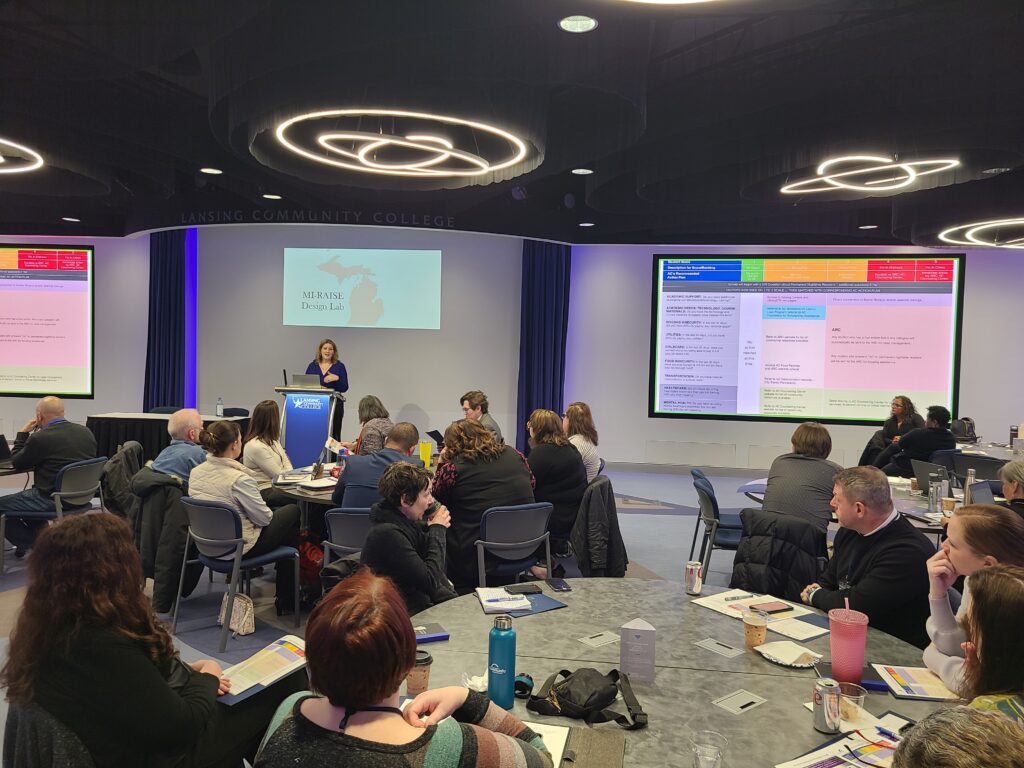Proposed federal legislation to reform food-stamp work requirements has revived a decades-long debate about the nature of benefits programs and their role in keeping people on the sidelines of the workforce. Whether or not this proposal advances, it is a discussion the nation needs to have.
America’s social safety net is vast. Not even counting Medicaid, the largest means-tested program, 59 million people are served in an average month by at least one of the most widely available programs, according to estimates by the Urban Institute. That’s nearly 19 percent of the population.
These programs provide critical services and support – food, housing, and income – for the most vulnerable Americans, including poor families, children, seniors and people with disabilities. But the lifeline they provide also can discourage work and trap recipients in poverty.
In a persistently tight labor market, it can be easy to paint those who opt out of the workforce as freeloaders. However, the problem does not lie with the benefit recipients, who are simply making rational decisions for the well-being of themselves and their families. The problem is that outdated policies and uneven requirements do not serve their best interests and, as a result, hold all of us back.
Fixing unintended consequences
With the vastness of the safety net comes complexity. Multiple programs with combined state and federal oversight create a confusing and often-conflicting web of requirements, eligibilities and waivers. We highlighted this problem last fall in our report, “Michigan’s Shrinking Workforce: Examining a 20-year Problem”:
“Navigating and following the rules can be difficult. The means-tested welfare system is large and complex, comprised of 90 programs that provide assistance such as cash, food, housing, medical care, and social services. Most of these programs discourage work by providing cash transfers without requiring employment or work preparation for those who are able-bodied. This is not a question of willingness to work: For some Americans, these programs create a viable alternative to employment.”
The “America Works Act” introduced by 24 House Republicans in March focuses on one of those programs: the Supplemental Nutrition Assistance Program, commonly known as food stamp assistance. The legislation cites a need to close loopholes that states use to ignore work requirements for able-bodied Americans receiving SNAP benefits. (Here is an overview of Michigan’s requirements.)
Several elements of the SNAP legislation mirror TalentFirst’s own recommendations for the program, including:
- Implement stricter and more uniform enforcement of work requirements among able-bodied adults without dependents (ABAWDs)
- Establish and enforce basic eligibility rules and close loopholes that allow states to expand eligibility and benefits beyond federal program rules
- Expand the ABAWD age category to include those aged 50-54 (The legislation calls for raising it to 65, but our focus was on expanding to cover the prime working-age population.)
SNAP is just one of the programs where we identified opportunities to update policies and remove work disincentives. The report includes detailed recommendations for Temporary Assistance to Needy Families, Unemployment Insurance, Medicaid, Social Security Disability Insurance and more.
Difficult decisions require evidence
One argument against linking benefits to work requirements is that this can be punitive to the most vulnerable. Others point out that blanket work requirements have been shown to be ineffective and, in some cases, even harmful to families by steering recipients into inappropriate jobs without skill development. Another risk is the “benefit cliff” that faces many families, the very real concern that modest increases in family income will leave them worse off by making them ineligible for one or more benefit programs.
However, as Angela Rachidi argues recently in a post for AEI, a new working paper for the Congressional Budget Office provides more evidence that work requirements help increase employment and income.
The working paper by Jason Falk focuses on Alabama’s expansion of work requirements to parents of children ages 6 months to 11 months (the previous requirement covered parents 12 months and older). Falk found the work requirement increased the employment rate of participants by about 12 percentage points, to 29%, and raised the average income.
Rachidi wrote that studies of requirements for other programs, such as SNAP, are lacking but “it is still logical that work requirements would positively change employment behavior.”
“This is why policymakers should continue to support work requirements in safety net programs as a way to counteract work disincentives, and to promote upward mobility,” she wrote. “Although critics often condemn work requirements for being uncaring toward the poor, policymakers should consider them an effective anti-poverty tool.”
These observations illustrate some of the challenges in reaching agreement on reforms – but these challenges should not deter the effort.
The rising disconnect from employment represents a tremendous loss of economic potential – costs that are equally steep for individuals as well as communities. Outdated benefits policies play a role. That does not mean benefits should be abandoned, nor that requirements must be ratcheted up to punitive levels.
Rather, reasonable, evidence-based reforms should be approached from the perspective of helping individuals and families to find the best path to economic well-being.


